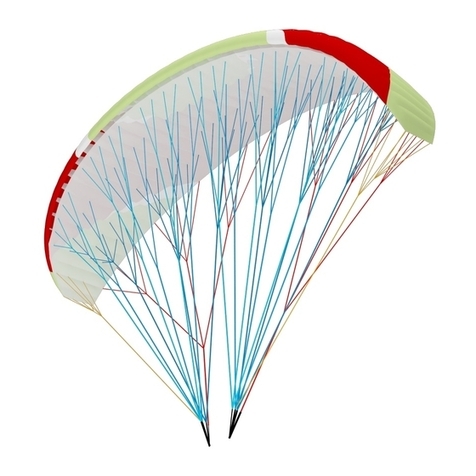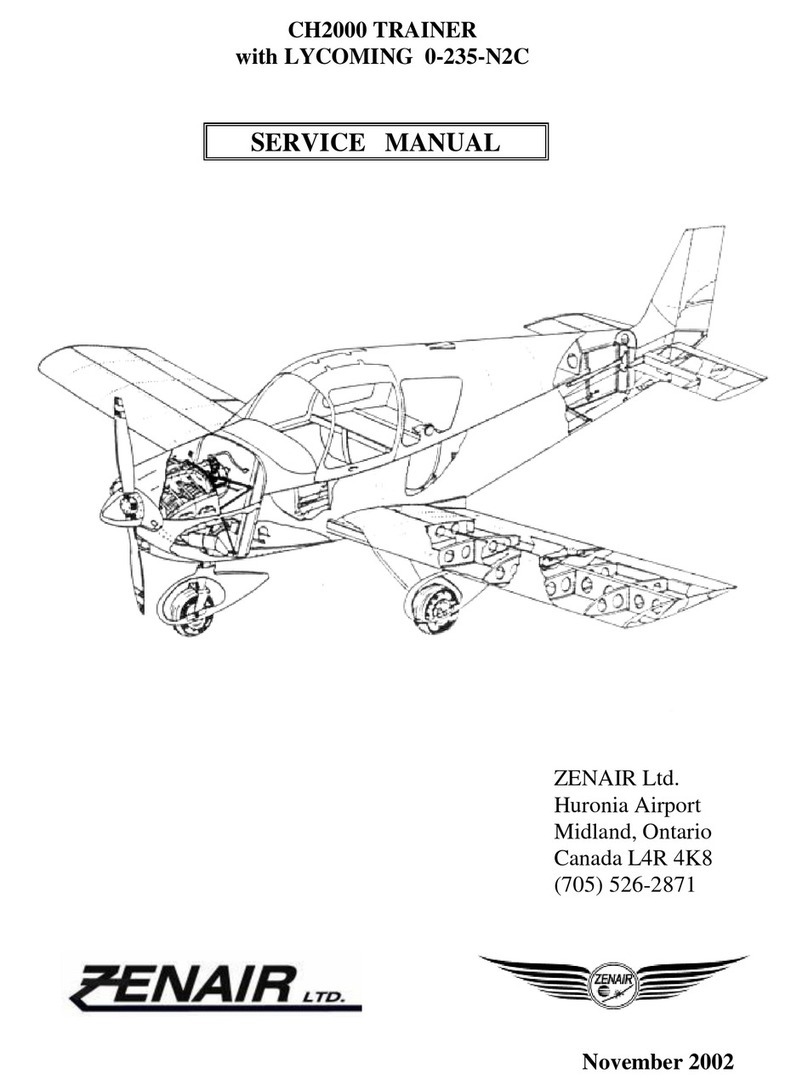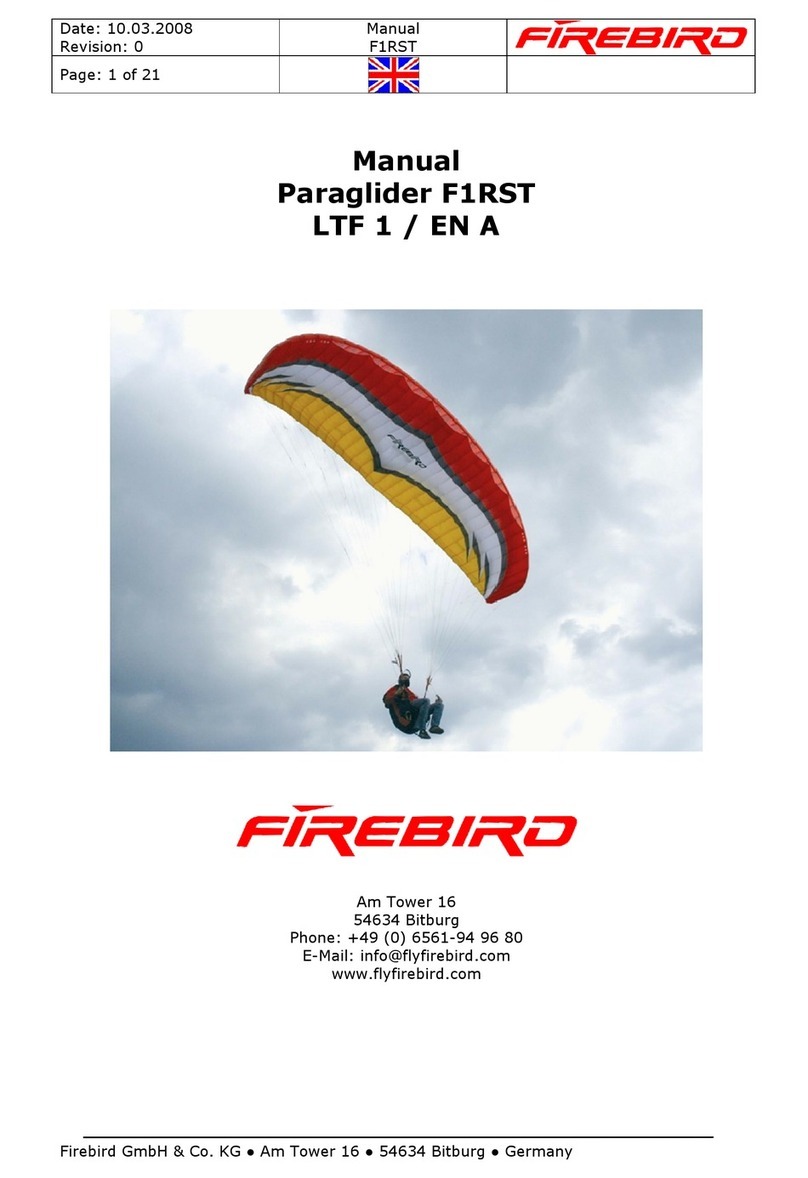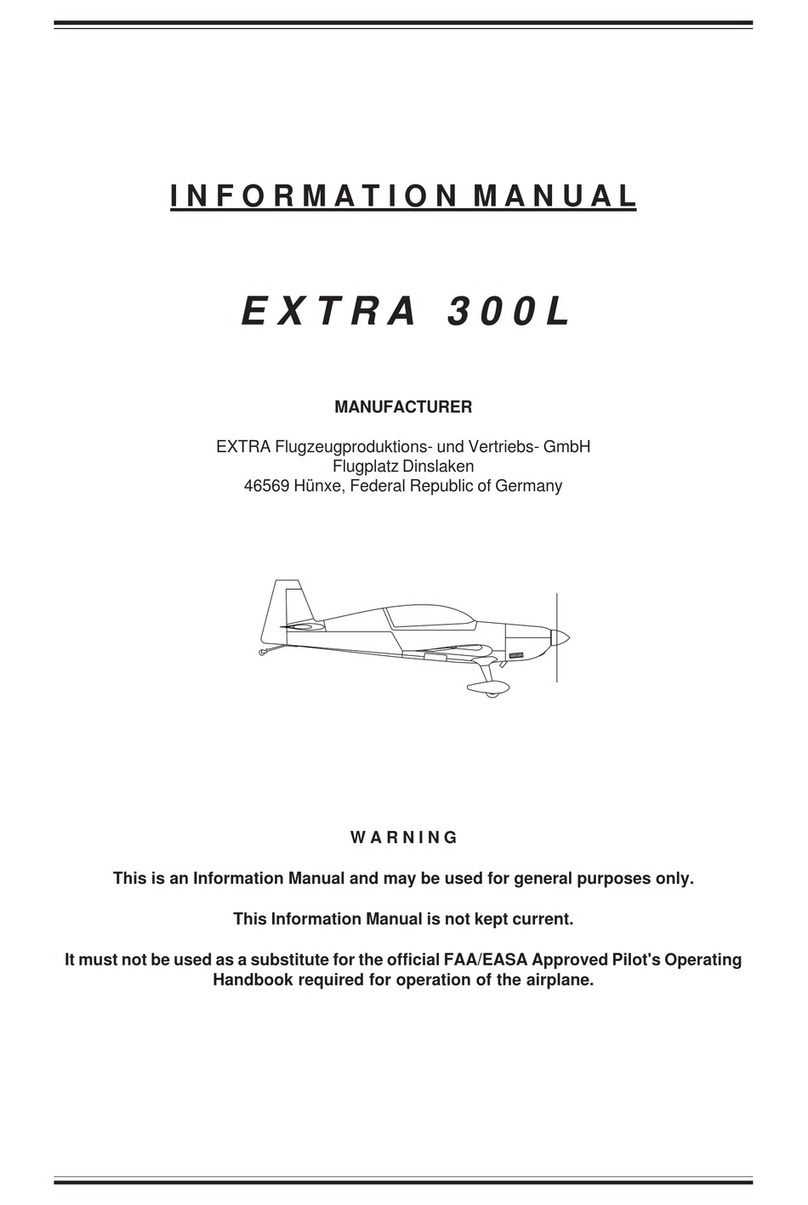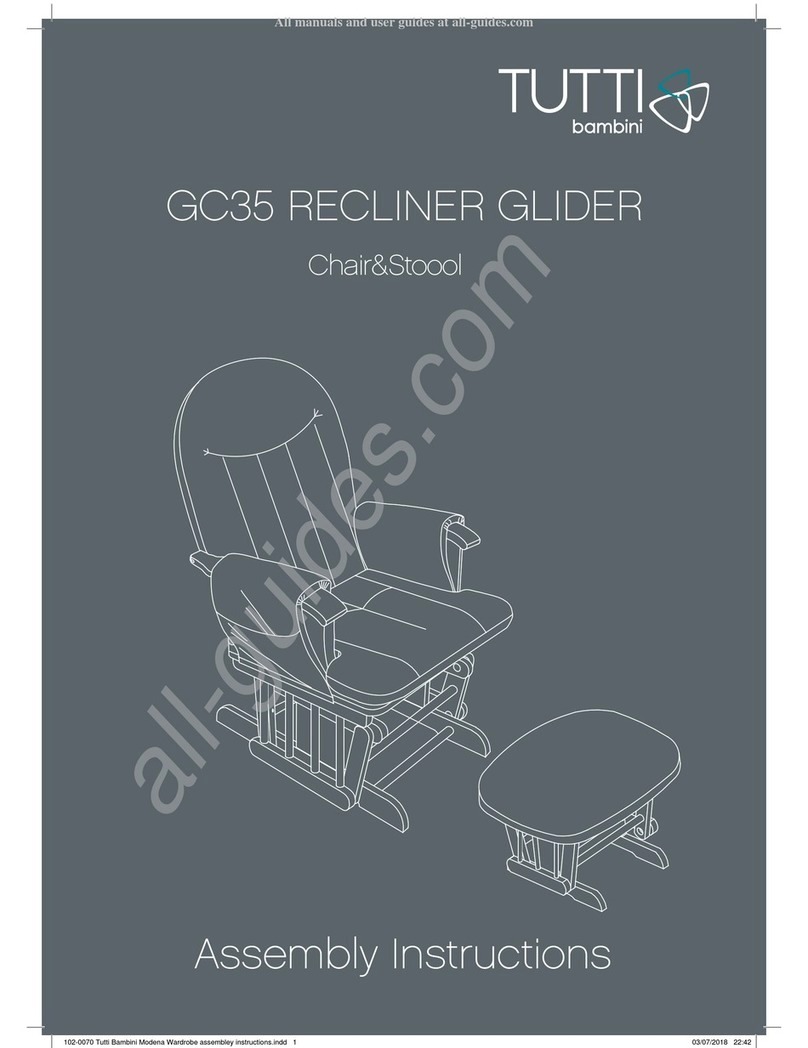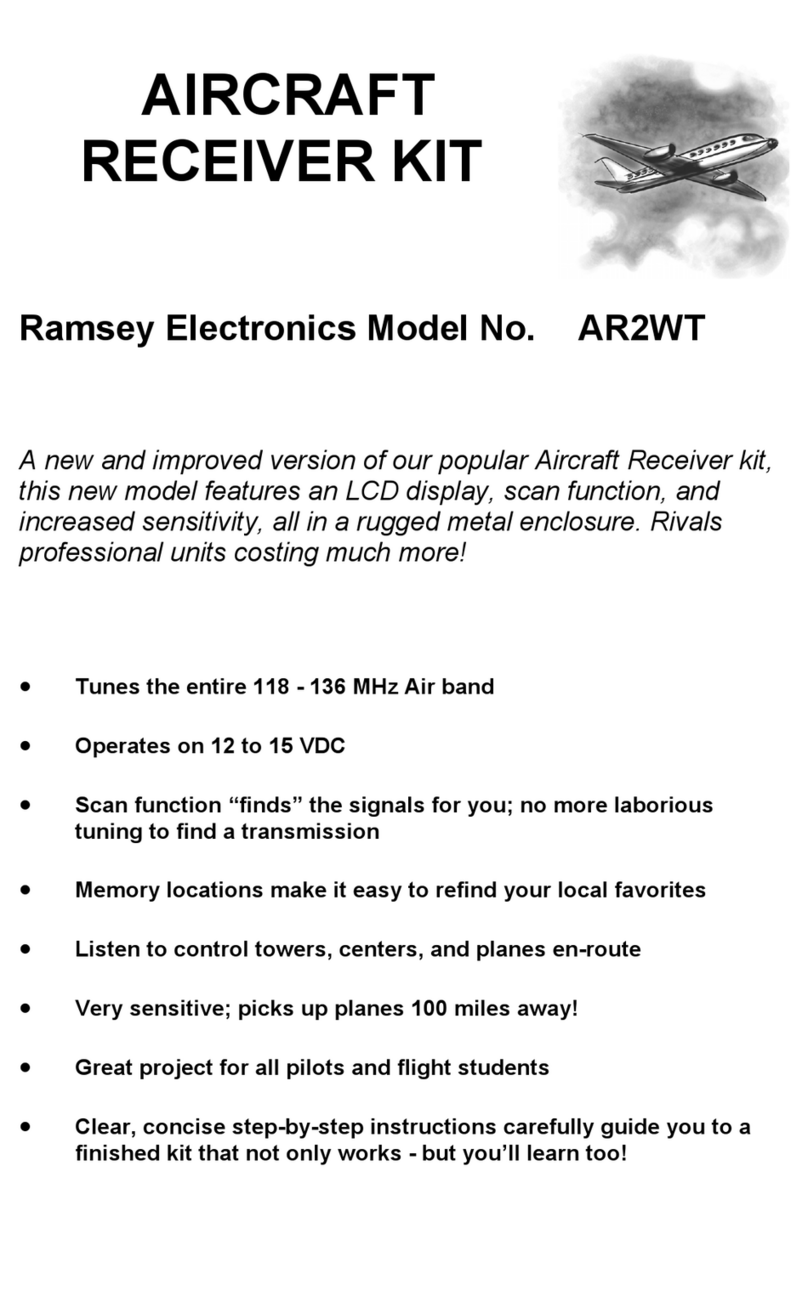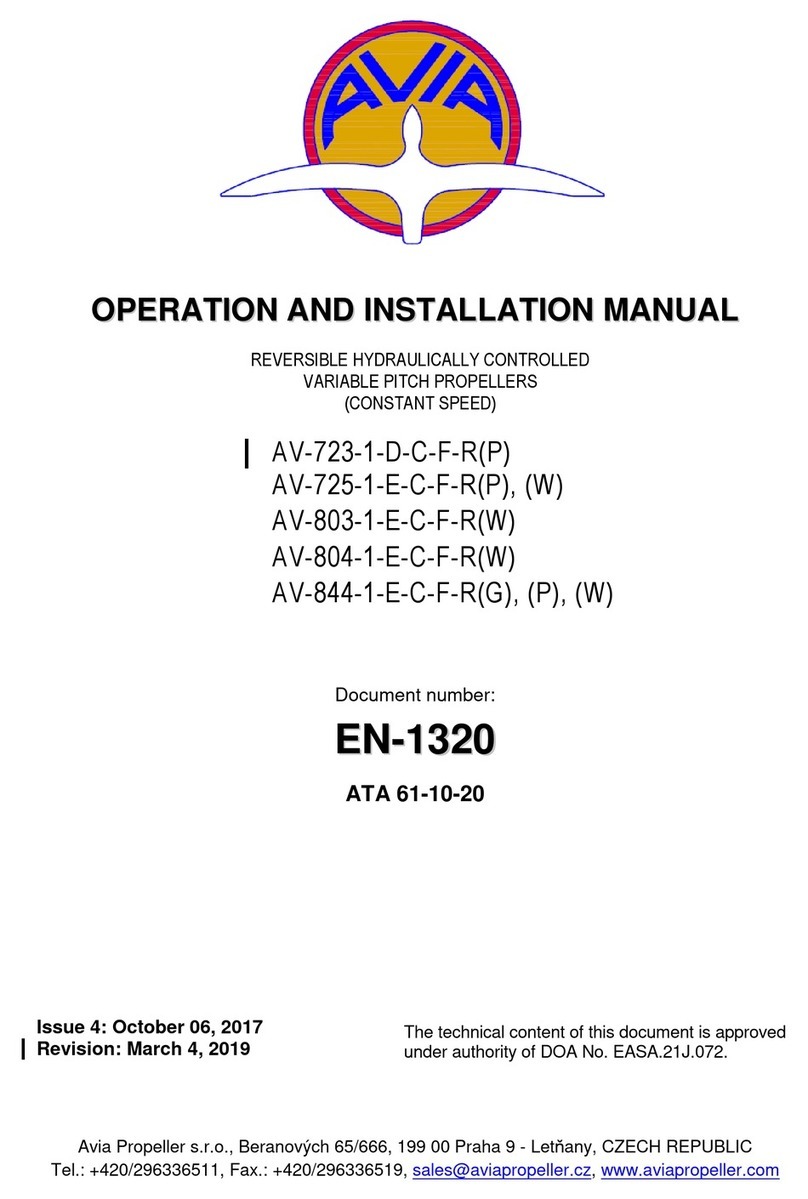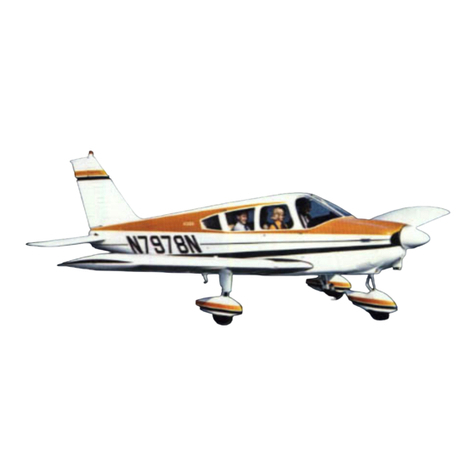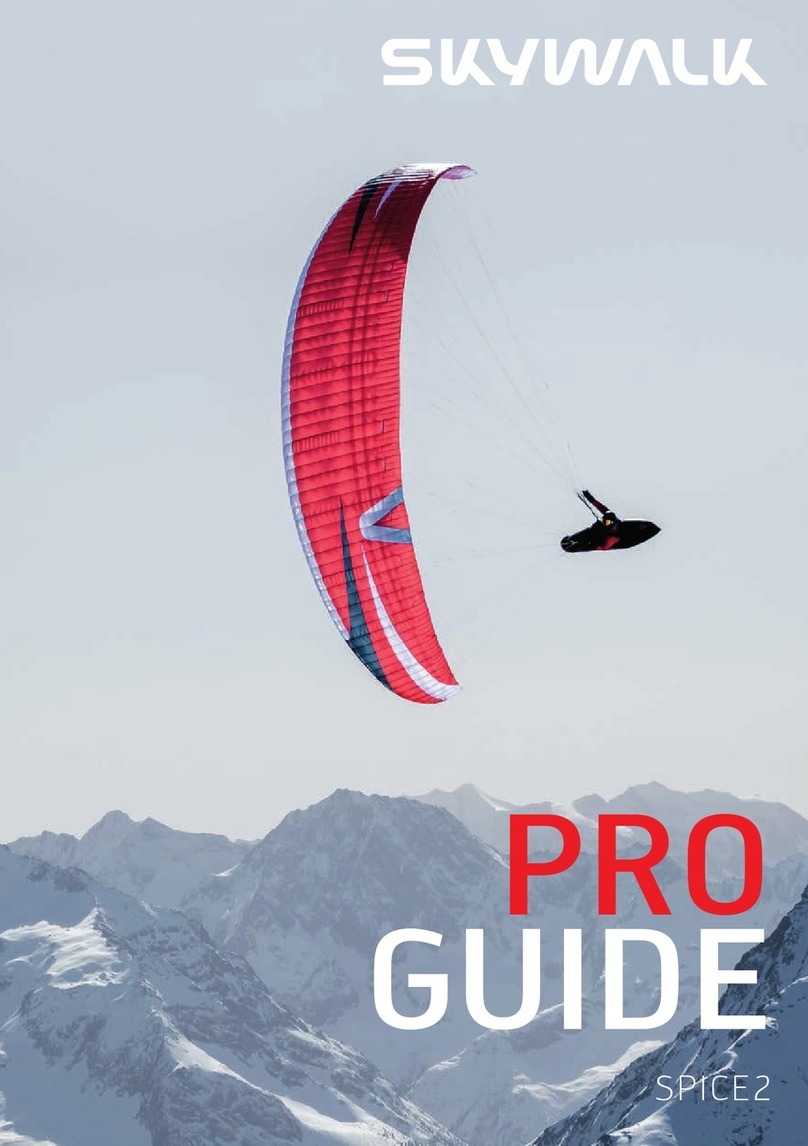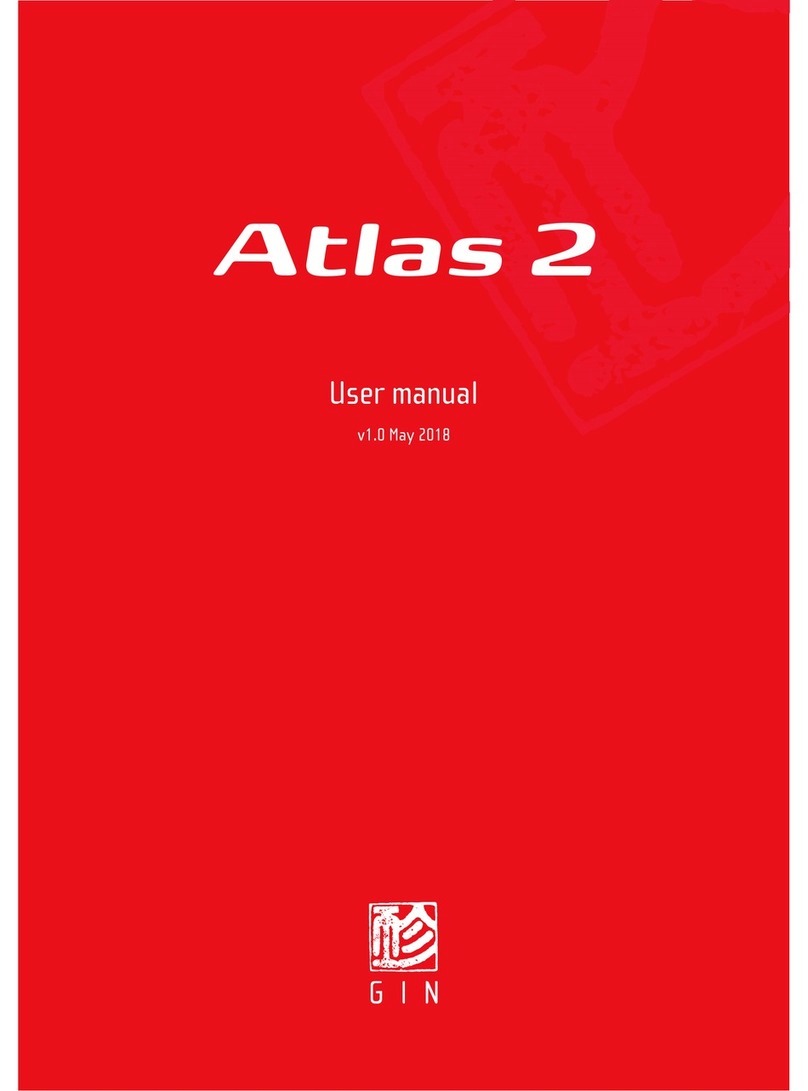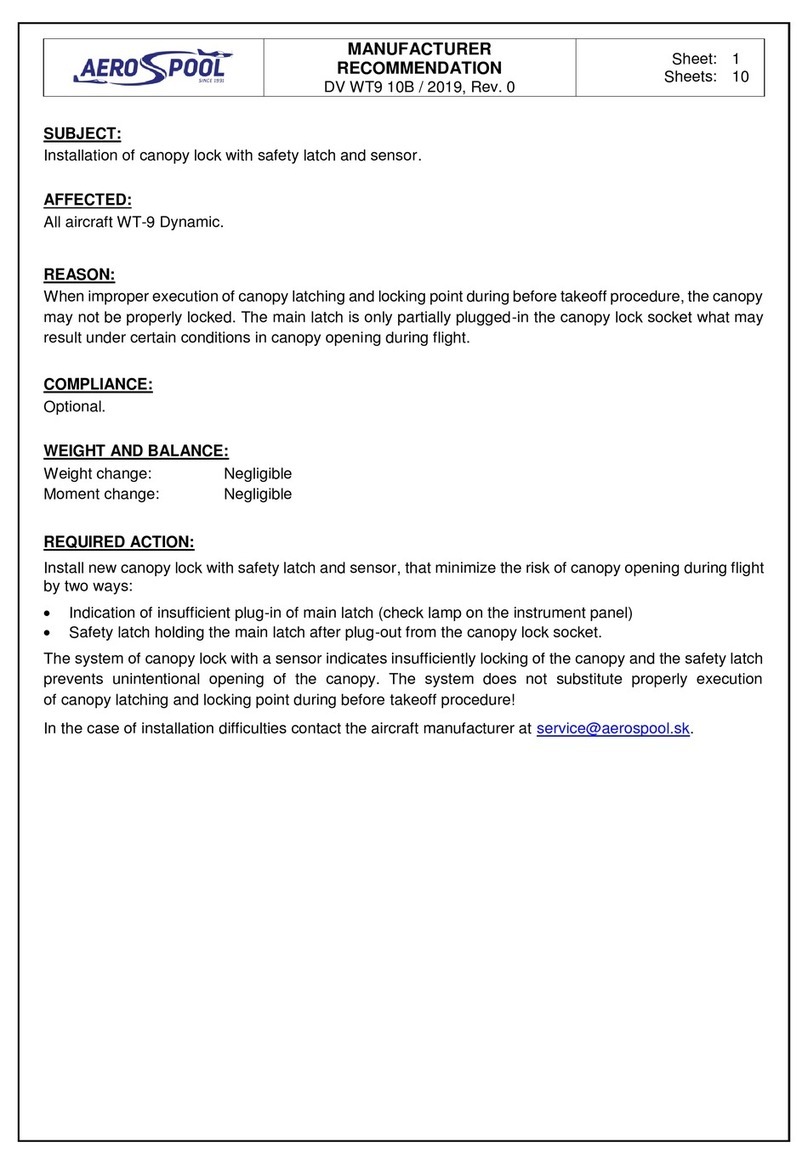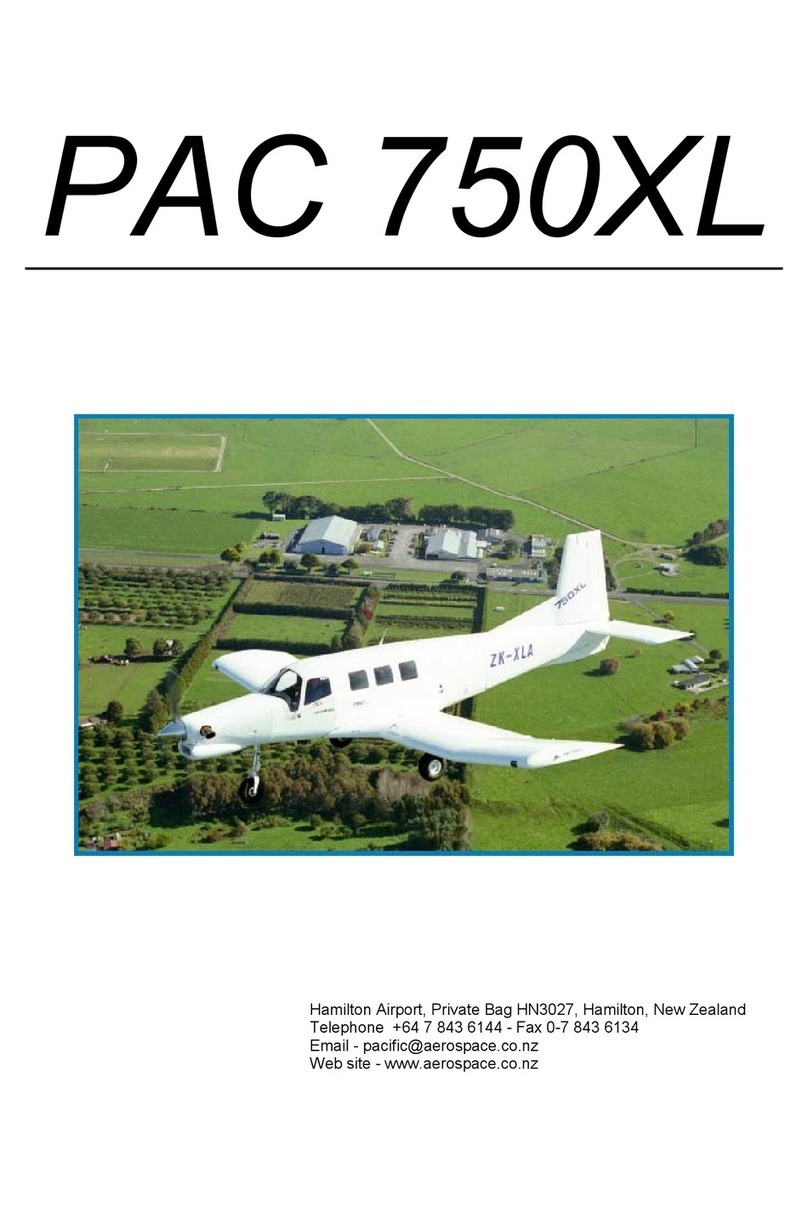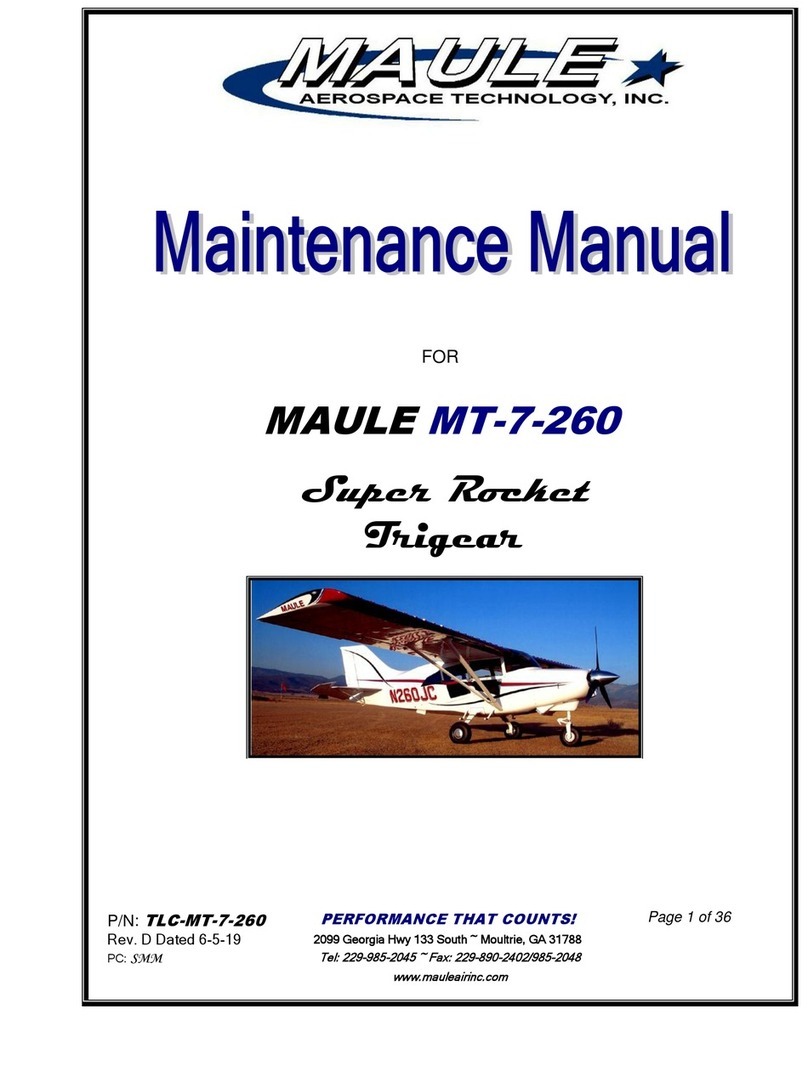NIRVANA SYSTEMS VISTA User manual

User's guide for the paraglider
VISTA

Dear Customer,
Thank you for choosing our tandem paraglider, the Vista. We are certain that you will be pleased
with your new paraglider. You will be pleasently surprised with the level of performance and
handling the Vista delivers. We believe, with this paraglider soaring to new heights will be a
wonderful e perience for you and your companions while sharing the magic power of flight.
Please feel free to contact us with any questions or comments and we will gladly help you.
Sincerely
NIRVANA SYSTEMS s.r.o.
Pavel Březina

THE VISTA
The VISTA is certified by AFNOR/CEN in category TANDEM with Swiss association SHV and
must be flown only by certified tandem pilots.
The design of Vista is based on eight years of e perience and application of diagonal
construction technology. The use of diagonal rib technology provides for a reduction of the
number of suspension lines while maintaining the stability of the gliders profile and flight
characteristics. The combination of diagonal and structural ribs assures the stiffness of
aerodynamic shape, thus providing less parasitic drag and resulting in very clean glider profile. All
structural details were carefully designed for higher wing load.
The shape and position of all segments and used technology assure that all characteristics are
maintained though-out the life span of the glider.
The leading edge with triangle shape openings are based on design used on our performance
gliders for many years. The shape and profile of the openings was custom designed for this type
of tandem glider.
This construction detail assures aerodynamic cleaness and prevents flattering and deformation
of leading edge which would otherwise affect the performance and flying characteristics of the
glider.
The design of leading edge openings also provides for fast inflation and make the tandem
launching very simple and easy.

PRE-FLIGHT INSPECTION
Before launch, inspect your glider carefully. The best technique is a circular walk around the
glider, starting at a leading edge of a wingtip. A suitable pre-flight checklist would entail:
1. Walk along the leading edge checking the connection points between lines and canopy,
and check for any sail damage.
2. Check the suspension lines for tangles and damage
3. Check the risers, rapid links and carbines
. Check the brake lines and pulleys
5. Check both harnesses, belts, links, speed system and reserve parachute
PREPARATION FOR TAKE-OFF
After pre-flight inspection of glider and equipment of pilot and passanger, the optimum shape to
layout the glider out is in a symmetrical horseshoe on its top surface. All suspension lines must be
cleared of knots and tangles.
There are also hook-in points for the passanger, allowing the pilot to choose the in-flight sitting
configuration based on passenger’s si e and type of the harness. This smart design feature
optimi es the lauching process and also greatly increase comfort during flight.
TAKE-OFF
The VISTA has the normal inflation characteristics of any standard tandem paraglider without any
unusual trick or secrets. The choice of launching technique should be determinated by presenting
lauch and tandem flying conditions. The canopy does not have a tendency to overshoot, the
imputs and correction during the inflation and take-off should be executed as part of pilot’s
adjustment to immediate launching conditions. The Vista Tandem glider was also tested for flying
with paramotor units.
LANDING
To assure safe and proper landing the pilot must provide the pre-flight briefing and communicate
with the passenger prior to the actual landing.
Landing should be executed from straight and level flight into the wind. Each landing must be
executed with due respect to presenting conditions. When landing in ero wind conditions, final
approach requires approximately 10-15%
brakes with a FULL FLARE. In high wind conditions,
little or no brake pressure should be applied so as to increase the forward speed of the glider, and
touch down should be at ero forward speed. After touch down be prepared to douse the glider
completely by turning around and using the „C" risers instead of the brakes.
BRAKE LINE ADJUSTMENT
The brake toggles of the VISTA are attached to the brake line by the manufacturer by a reef knot.
Each brake line is clearly marked above the reef knot. This is the MINIMUM brake line length to
be maintained.
DO NOT ADJUST TOGGLE LENGTH ABOVE THIS MARK!!
STEERING AND HANDLING
The factory trim setting is designed to be proportional to the input from the pilot. As with all
paragliders, an increase in brake pressure and weight shift will change the bank angle, diameter
of turn, and the sink rate. The VISTA’S brake pressure will increase progressively in both

symmetric and assymetric steering until approaching stall speed, at which point brake pressure
will obviously decrease. This characteristic is an early warning sign for pilots to correct input.
FLYING IN TURBULENCE AND THERMALLING
The VISTA is designed to be collapse resistant up to a certain degree of turbulence even when
flying at top speeds. When flying through strong turbulence it is recommended that you stabili e
the glider by equally applying about 25% brakes on both sides. An experienced pilot may also
increase the overall stability of glider by „actively" flying the canopy. Active flying means using
pilot input to keep the wing as stable and efficient as possible. This includes proper surge control
through the use of brakes. Before flying in strong thermal conditions, you should be familiar with
advanced canopy control techniques.
INCIDENTAL FLIGHT REGIMES
Deep/Constant Stall
The VISTA does not have a tendency to enter or stay in a deep/constant stall. It is important to
know that due to weather condition or pilot input this maneuver is attainable. To exit this
maneuver the recommended method is to insert your hand between the „A" and „B" risers and
apply forward pressure on the „A" risers.
This will help the glider attain forward speed to assist returning to normal flight.
*Note: Smooth and constant pressure must be applied on the „A" risers. Abrupt and jerky
movement of „A" risers is NOT effective!
Spin / Negative Spin
Tandem paragliders are designed and must be flown only by experienced and certified pilots.
It is possible to stall only one side of the glider resulting in a spin. If you notice this occurring,
immediatly returning brakes to trim level is the most effective response. The glider will return to
normal flight. The recovery and return to normal flight can result in an additional 180 degrees of
turn and pilot must be prepared to brake the recovery surge and deal with a possible
asymmetrical collapse.
Pilot’s imput into steering during the negative spin or attempts to interfere with glider’s exit from
this maneuver are not reccomended as these can negatively affect the speed and results of
glider’s recovery.
Any attempts to execute or practice this maneuver without proper training, licence and extensive
experience of tandem flying are very dangerous and can lead to serious accidents or fatalities.
Full Leading Edge Collapse
If a full leading edge collapse occurs with enough elevation the glider will immediately re-inflate
and return to normal flight. The re-opening can be assisted by the energetic pulling of both brakes
with immediate return to hands up position.
Asymmetrical Collapse
An asymmetrical collapse can occur in strong turbulence. Depending on the si e of the collapse,
the VISTA will start re-inflating and slowly turn up to 180 degrees. It is possible to slow down/stop
the turn by weight shifting away from the collapse and applying the brake on the open side of
glider. To
speed up the re-inflation the pilot can give a few deep pulls to the brake on the
collapsed side.

DESCENT TECHNIQUES
B-Line Stall
The B-Stall is a fast descent maneuver for use in emergency situations only. B-Stall is performed
by symmetrically pulling down on the B-risers. From normal straight flight grasp the „B" risers at
the quick link and pull them down. Do not over pull, „A" risers must maintain trim position. The
glider will shrink chord-wise, and you will feel your forward speed decrease as your decent rate
increases. To exit the maneuver, release the risers in a quick and symmetrical motion.
There will be a mild surge as the glider regains forward speed and returns to normal flight.
*NOTE - ALL INPUTS WHILE EXECUTING B-STALL MUST BE DONE QUICKLY AND
SYMMETRICALLY.
Spiral/Spiral Dive
The glider can enter a spiral dive by gradually increasing the bank angle on a 360 degree turn. Be
aware that too much initial brake input could induce a spin. If you detect the beginning of a spin
simply release the brake and start over. As the bank angle increases so will your descent rate and
G forces on you. To exit the spiral dive you slowly decrease the amount of inside brake. You
should exit a spiral dive at least 200m AGL. The spiral dive can produce a very high sink rate,
however for rapid decent in turbulent conditions this is not recommended.
The spiral dive can cause the dissyness and airsickness of pilot and his padssenger and thus is
not reccomended as an escape maneuver.
The VISTA does not stabili e in a spiral dive, but it is easy for pilot to become disoriented so we
recommend that this maneuver should be executed only by experienced pilots who are already
familiar with different flying characteristics between solo and tandem gliders.
Full Stall
Never full stall your glider without proper training and/or proper supervision. Full stall
should only be performed over water with a reserve chute or in an emergency situations.
NEVER FULL STALL WITHOUT SUFFICENT ALTITUDE!
TOWING
The VISTA is suitable and approved for towing, provided the pilot has the relevant license or
towing endorsement. For any tow systems, it is a must to seek professional instructions.
PARAMOTORING
The VISTA is suitable and tested by manufacturer for tandem flying with paramotor, based on
proper selection of power unit as well as the harnesses, hook-in system and optional protection
features. Before using this tandem paraglider for paramotoring contact the manufacturer for
consultation and advise. Paramotoring, especially in tandem require special pilot’s training and
licence.
STORAGE AND MAINTENACE
With proper care and maintenance your glider will give you many hours of excellent service.
Never pack your glider in damp or wet conditions. Avoid leaving the unpacked glider in direct
sunlight and do not expose your glider to high temperatures. Always store your paraglider in dry,
ventilated storage away from the daylight. Do not store the paraglider with dyes, paints, chemicals
or gasoline. If glider needs cleaning only use a soft sponge and clean warm water.

As a rule - leave it dirty. No paraglider lost performance from being dirty.
NEVER USE ABRASIVE CLEANERS, SOLVENTS, OR SOLVENT-LIKE CLEANERS.
REPAIRS
If your glider is damaged in any way, you should contact the manufacturer or an authori ed
dealer. Very small holes and cuts in the sail can be repaired using sticky-back Ripstop Skytex
repair tape as long as the tear is not on the stitching of the sail. Ensure a large overlap (on both
sides) when using repair tape. Any major damage of the canopy, lines and risers should be
repaired only by the manufacturer or an authori ed dealer. Any damage to the line (even if it is
only the outer sheath) means a new line should be ordered immediately.
INSPECTIONS
The first thurow inspection by the manufacturer is recommended after first 2 years/100 hours of
flighing and yearly inspections thereafter.
LIST OF MATERIALS USED ON THE QUEST
PART OF GLIDER / PRODUCT / SPECIFICATION / MANUFACTURED
Top canopy - SKYTEX E77 A-Polyamid 41g/m2 f. Porcher Sports
Bottom canopy - SKYTEX E38 A-Polyamid 41g/m2 f. Porcher Sports
Diagonals and ribs-SKYTEX E29 A-Polyamid 41g/m2 f. Porcher Sports
Leading edge/ribs reinforcement - Gitter-Polyester + folie-Mylar 210g/m2 f. Polyant
Leading edge/bottom hem,upper hem - Polyamid 13 mm f. STAP
Leading edge/flow edge - Polyamid 25 mm f.POLYANT
Line attachment loop - Polyamid 15 mm f. STAP a.s.
Brake line attachment loop - Polyamid 13 mm f. Güth&Wolf
Hems & line ends - Thread -BN60 Polyamid f. Barbour Threads Ltd.
Sail seams - Thread -Synton 30/50 Polyester f. AMANN Sponit
Risers - Threads BN10 Polyamid f. Barbour Threads Ltd.
Lines: top - kevlar D 1,3 mm f. EDELRID
Lines: main - Kevlar D3,4 D2,1; D1,8; D1,5 mm f. EDELRID
Lines: brakes - Dyneema D 2,0 mm f. EDELRID
Risers - Polyamid 25 mm f. MOUKA
Brake toggles - Polyamid 28 mm f. STAP a.s.
Riser Quick Links – Delta Inox,f.Mailon Rapid
Pulley brake line - RN302 Nylon / Alu f. Riley
TECHNICAL DATA
TYP QUEST
AREA FLAT m
2
42
AREA PROJECTED m
2
37,3
SPAN FLAT m 14,5
SPAN PROJECTED m 11,8
ASPECT RATIO FLAT 5
ASPECT RATIO PROJ. 3,7
MAX CHORD 3,66
CELL NUMBERS 52
WEIGHT IN FLIGHT kg 155-220
WEIGHT OF CANOPY kg 10
AFNOR (CEN) TANDEM

NIRVANA SYSTEMS s.r.o. , Jateční 523, 760 01 Z ín, CZ
te .: 00420 577226616, fax: 00420 577019117
e-mai : [email protected], http://www.nirvana.cz
Table of contents


